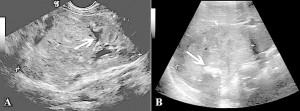Wilms tumor has been the most common form of kidney cancer affecting children under five years of age. Just like any type of cancer, early detection and treatment effectively increases the survival rate of the patient. If you want to know more about this condition, this article will help you out.
Nephroblastoma is another term for Wilms tumor which most likely affects only one kidney although it can affect both kidneys as well. Studies show that around 6% of cancers that occur among children are nephroblastoma and could possibly spread onto the liver, lungs and neighboring lymph nodes. Latest diagnostic techniques help doctors figure out the extent of the disease and initiate appropriate treatment procedure.
What are the Wilms tumor Symptoms?
Wilms tumor is hard to detect during its early stage because it can grow without causing any pain. However, even when they become large, they can be detected before they metastasize to different body parts. Common symptoms of this disease include high blood pressure, fever, reduced appetite, weight loss, constipation and abdominal pain. Although these symptoms can be a sign of other health conditions, it will be much better to have your child examined by the doctor. On the other hand, if you notice some blood in your child’s urine or abdominal mass together with the aforementioned symptoms; it becomes more apparent that it is Wilms tumor.
Causes of Nephroblastoma
The real cause of Wilms tumor remains a mystery but it has been thought that this form of kidney cancer develops when the child is still inside the womb of his or her mother. Supposedly, some cells are intended to shape the kidneys. Instead of doing its function in forming the kidneys, they proliferate in their early state developing into a tumor that becomes apparent when the child reaches 3 or 4 years of age.
Who are at High Risk?
The disease will most likely occur under the following risk factors.
• Gender
Studies show that a greater number of girls are affected by this disease compared to boys. This only means that the disease tends to occur more likely in girls.
• Age
On the average, the disease is very common in 3-year old children but uncommon in older ones and rarely in adults.
• Family History
Research shows that around 3% of children affected with Wilms tumor have a family member or relative suffering from the disease as well.
• Race
African-American children are at high risk of developing nephroblastoma than children from Asian-American race. The grounds for this are unclear.
• Birth Defects and Syndromes
In most cases, children with nephroblastoma are born with certain types of birth defects usually in the form of syndromes. Examples of these are hemihypertrophy, an abnormality wherein the one side of the human body is notably larger; hypospadias, a condition wherein the urethral opening is underside of the penile organ and not on the tip; aniridia, a partial or complete lack of iris of the eyes and cryptorchidism which refers to undescended testicles in boys. On the other hand, some syndromes are closely associated to nephroblastoma such as WAGR syndrome, Denys-Drash syndrome and Beckwith-Wiedemann syndrome.
How is it Diagnosed?
Typically, the doctor will ask for symptoms presented by the child, mother’s condition during pregnancy and other medical issues. After which, the doctor will conduct diagnostic tests which include physical examination, blood and urine tests as well as imaging tests like X-ray tests, ultrasound, CT scan, MRI or bone scan to figure out if the disease has metastasized to other parts of the body.
Treatment Procedure
There are various ways to treat Wilms tumor and staging is essential to help doctors figure out the extent of the kidney cancer and initiate appropriate treatment. Due to the rarity of this disease, the doctor may refer you to a cancer institute specializing in treating this form of childhood kidney cancer. Besides, children have different reactions to therapies which are why adjustments are necessary. Hence, discuss the treatment procedure with your child’s doctor and ensure that you fully understand both the pros and cons of these treatments as well as how to manage the side effects of such treatments.
Treatment procedures of Wilms Tumor (Nephroblastoma)
• Nephrectomy
This refers to the surgical procedure of removing the affected kidney tissue. Nephrectomy comes in different types from simple, partial and radical which involves removing the entire kidney and nearby tissues to complete removal of the adrenal gland, urethra and surrounding lymph nodes.
• Chemotherapy
This treatment procedure involves killing the cancer cells through medication.
• Radiation Therapy
This treatment involves using high-energy rays in killing cancer cells like X-rays.
Prevention
There is nothing you can do to prevent Wilms tumor. That is why if your child shows any of the risk factors, your child’s doctor will conduct periodic diagnostic tests and examinations to detect the tumor earlier.
Learning that your child has Wilms tumor could be the worst nightmare you could ever have imagined and living with it can be hard and painful. However, early detection and prompt treatment increases the survival rate of your child with Wilms tumor.
